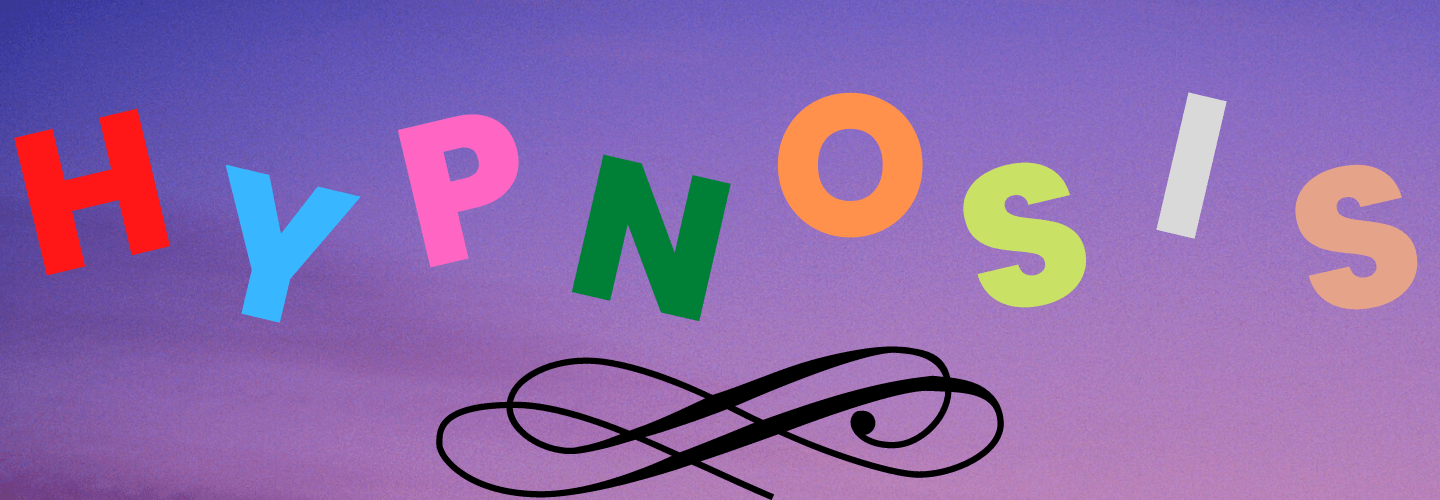
Overcome fear of balloons with hypnosis, EFT, and NLP. These techniques offer relief and empowerment against phobias. Hypnosis reframes thoughts and accesses the subconscious for lasting change. EFT taps specific points to alleviate emotional distress and rewire fear responses. NLP rewires thought patterns and anchors positive emotions. Combining these methods tailors sessions for profound transformations towards fear reduction. Experience a powerful path to freedom from balloon phobia. Explore the transformative potential these methods hold for lasting relief and empowerment.
Understanding Balloon Phobia
Balloon phobia, also known as globophobia, is a specific fear characterized by an intense and irrational dread of balloons. This fear can be triggered by various factors, including past traumatic experiences involving balloons, witnessing someone else experiencing fear around balloons, or a predisposition to anxiety disorders. The fear of balloons can manifest in physical symptoms such as sweating, trembling, rapid heartbeat, and even full-blown panic attacks.
Treatment strategies for balloon phobia typically involve exposure therapy, cognitive-behavioral therapy (CBT), relaxation techniques, and in some cases, hypnotherapy, Emotional Freedom Techniques (EFT), or Neuro-Linguistic Programming (NLP). These approaches aim to help individuals confront their fear in a safe and controlled environment, challenge negative thought patterns associated with balloons, and learn coping mechanisms to manage anxiety when encountering balloons. By addressing the underlying causes of the phobia and developing effective coping strategies, individuals can gradually overcome their fear and regain control over their lives.
Benefits of Hypnosis

Hypnosis offers a unique approach to addressing fears and phobias, providing individuals with a tool to reframe their thoughts and emotions.
By incorporating NLP techniques, individuals can gain a deeper understanding of their triggers and learn effective strategies for managing their phobias.
Exploring the benefits of hypnosis can open up new avenues for overcoming fear and promoting mental well-being.
Hypnosis for Phobia Relief
Individuals seeking relief from phobias often turn to hypnosis as a powerful tool for overcoming deep-rooted fears and anxieties.
Hypnosis offers significant benefits in phobia reduction by allowing individuals to access their subconscious minds, where the root causes of fears are often stored.
Through tailored hypnotherapy sessions, individuals can address and reframe the underlying triggers of their phobias, leading to long-lasting relief and a sense of empowerment.
The benefits of hypnosis extend beyond just symptom management, as it can help individuals cultivate a sense of calmness, control, and confidence in the face of their fears.
NLP Techniques Explained
Utilizing Neuro-Linguistic Programming (NLP) techniques in conjunction with hypnosis can enhance the effectiveness of phobia relief by enabling individuals to rewire their thought patterns and behaviors towards a more positive and empowered mindset. NLP techniques focus on subconscious reprogramming, which involves identifying and transforming limiting beliefs that contribute to fears or phobias.
By using NLP alongside hypnosis, individuals can access deep-rooted thought patterns and reframe them in a way that promotes confidence and resilience in the face of triggers. Techniques such as visualization, anchoring positive emotions, and reframing negative experiences can help individuals replace fear responses with feelings of calm and control.
This integrated approach can lead to lasting change by addressing the root causes of the fear of balloons.
EFT Techniques for Phobia

To address phobias using EFT techniques, understanding the basics of EFT for phobia management is essential.
Identifying the EFT tapping points and structuring an effective EFT session are key components in successfully alleviating phobias.
EFT Basics for Phobia
When addressing phobias using Emotional Freedom Techniques (EFT), it is essential to understand the basics of this powerful and effective tool for emotional healing. EFT basics involve tapping on specific meridian points while focusing on the phobia to alleviate emotional distress.
In phobia management, EFT aims to rewire the brain’s response to the fear trigger, reducing the intensity of the phobia over time. By combining verbalizing the issue, tapping on acupressure points, and affirmations, EFT helps individuals release negative emotions associated with the phobia.
This technique can provide relief by addressing the root cause of the fear, promoting relaxation, and creating a sense of emotional balance. EFT offers a holistic approach to managing phobias that can lead to lasting change.
EFT Tapping Points
Understanding the pivotal EFT tapping points is fundamental in applying effective techniques to address phobias and promote emotional healing. By recognizing these specific points on the body, individuals can target the root causes of their fears and anxieties.
When dealing with phobias such as the fear of balloons, identifying triggers is essential to the healing process. EFT tapping points, including the top of the head, eyebrow, side of the eye, under the eye, under the nose, chin, collarbone, under the arm, and the karate chop point, serve as avenues for emotional release.
Utilizing these points through tapping sequences can help individuals release negative emotions associated with their phobias and work towards overcoming them.
EFT Session Structure
In structuring an EFT session tailored for addressing phobias, it is essential to establish a safe and supportive environment conducive to exploring and resolving deep-rooted fears.
The EFT structure involves identifying the specific phobia related to balloons, setting clear intentions for the session, and guiding the individual through tapping on the meridian points while focusing on the fear.
The benefits of this structured approach include promoting relaxation, desensitizing the fear response, and creating new positive associations with the trigger.
When combined with NLP session tips, such as reframing negative beliefs and visualizing successful outcomes, the effectiveness of the EFT techniques for phobia can be enhanced.
NLP Strategies for Fear

Curious about how Neuro-Linguistic Programming (NLP) can help alleviate fears? When it comes to fear management, NLP offers powerful strategies to address phobias and anxieties. NLP techniques focus on understanding how individuals perceive and process their fears, aiming to reframe these perceptions for a more positive outcome. By using language patterns, visualization exercises, and mental rehearsal, NLP aims to rewire the brain’s response to fear triggers.
One effective NLP strategy for fear is the ‘Fast Phobia Cure‘ technique, which involves guiding individuals to revisit the source of their fear and then mentally transforming that experience into a less threatening one. This method, along with other NLP strategies, can aid in desensitizing individuals to their fears and promoting a sense of empowerment over their emotions.
When combined with hypnosis techniques, NLP can further enhance the process of phobia resolution. Through guided relaxation and heightened suggestibility, hypnosis can help individuals access their subconscious mind to reframe negative thought patterns related to fear. Overall, NLP strategies offer a structured and practical approach to overcoming fears and phobias.
Overcoming Balloon Anxiety

For individuals struggling with a fear of balloons, there are effective techniques available to help overcome this anxiety and regain control. Balloon exposure therapy is one such method used to gradually expose individuals to balloons in a thorough and safe environment. This exposure helps desensitize the person to their fear, allowing them to confront and manage their anxiety levels effectively.
In addition to exposure therapy, a cognitive-behavioral approach can be beneficial in addressing balloon anxiety. This approach focuses on identifying and challenging negative thought patterns and beliefs associated with balloons. By changing these thought processes and replacing them with more rational and positive ones, individuals can learn to reframe their fear and reduce the intensity of their anxiety.
Combining balloon exposure therapy with a cognitive-behavioral approach can provide a thorough strategy for overcoming balloon anxiety. It is essential for individuals seeking to conquer their fear of balloons to work with trained professionals who can guide them through these evidence-based techniques with empathy and support.
Hypnosis Sessions Explained

Understanding what happens during a hypnosis session can alleviate any apprehensions one might have.
Exploring the process overview and the benefits of hypnotherapy can shed light on how it can be a valuable tool in overcoming fears and anxieties.
Let’s investigate the points to gain insight into the effectiveness of hypnosis in addressing balloon phobias.
Hypnosis Process Overview
During a hypnosis session, a trained practitioner guides the individual into a relaxed state of heightened focus and suggestibility. This process allows for the exploration of subconscious thoughts and behaviors. Here are key points to ponder during a hypnosis session:
- Induction Techniques: Different methods are used to induce a hypnotic state, such as progressive relaxation or visualization.
- Suggestion: The practitioner delivers positive suggestions tailored to address the individual’s specific fears or phobias.
- Deepening Techniques: These are used to enhance the depth of the hypnotic state for better results.
- Reframing: Negative thought patterns related to the fear of balloons can be reframed into positive associations.
- Post-Hypnotic Suggestions: These are given to reinforce the positive changes made during the session.
Benefits of Hypnotherapy
Utilizing hypnotherapy in tailored sessions can bring about profound transformations by tapping into the subconscious mind‘s power to address and alleviate various psychological challenges. The mind-body connection is a key aspect of hypnotherapy, allowing individuals to access their inner resources for healing benefits.
Through guided hypnosis sessions, individuals can experience a profound transformation in their mental wellness, enabling them to overcome phobias, fears, and anxieties. Hypnotherapy assists in fostering a deep understanding of one’s thoughts and behaviors, leading to positive changes and personal growth.
EFT Tapping for Phobias

EFT Tapping provides a powerful technique for addressing phobias by combining gentle tapping on specific meridian points with focused mental attention to alleviate fear responses. This method can be highly effective in phobia management and emotional release. Here are five reasons why EFT Tapping is beneficial for overcoming phobias:
- Calms the Nervous System: The rhythmic tapping helps calm the fight-or-flight response, reducing anxiety levels.
- Disrupts Negative Thought Patterns: By tapping on specific points, EFT interrupts the negative thought patterns associated with phobias.
- Promotes Mind-Body Connection: The combination of tapping and verbalizing the issue promotes a connection between the mind and body, aiding in emotional processing.
- Encourages Acceptance: EFT encourages acceptance of the phobia while working to reduce its emotional intensity.
- Provides a Coping Mechanism: Tapping can serve as a practical tool that individuals can use whenever they encounter triggers associated with their phobia.
Utilizing EFT Tapping for phobias can offer individuals a structured and holistic approach to managing and overcoming their fears.
NLP Anchoring Techniques

Employing Neuro-Linguistic Programming (NLP) Anchoring Techniques offers individuals a strategic method to cultivate positive emotional states and responses. In the context of phobia resolution, NLP anchoring techniques can be particularly effective in helping individuals overcome their fear of balloons. Anchoring involves associating a specific stimulus with a particular emotional state, allowing individuals to access desired emotions on demand.
To apply anchoring techniques to resolve a balloon phobia, individuals can recall a time when they felt exceptionally calm and in control. By vividly remembering this moment while simultaneously engaging in a physical anchor such as pressing the thumb and forefinger together, a strong positive association can be established. Subsequently, when faced with the trigger – in this case, balloons – triggering the anchor can help evoke the calm and controlled emotional state associated with the positive memory.
Balloon Fear Hypnotherapy

Individuals seeking to address their fear of balloons may find relief and empowerment through the practice of hypnotherapy. Balloon fear hypnotherapy offers a targeted approach to help individuals overcome their phobia in a safe and controlled environment.
Here are some key points to ponder:
- Customized Treatment Plans: Hypnotherapy sessions can be tailored to suit the individual’s specific fears and triggers related to balloons.
- Deep Relaxation Techniques: Hypnosis enables deep relaxation, making it easier for individuals to confront and manage their fear of balloons.
- Positive Affirmations: Therapists often incorporate positive affirmations during hypnotherapy sessions to reframe negative thought patterns associated with balloons.
- Gradual Exposure: Hypnotherapy can facilitate gradual exposure to balloons, helping individuals build resilience and confidence over time.
- Behavioral Techniques: Therapists may use behavioral techniques within hypnotherapy sessions to equip individuals with effective fear management strategies.
Through balloon fear hypnotherapy, individuals can explore various balloon therapy options and fear management techniques to navigate their phobia successfully.
Integrating EFT, NLP, and Hypnosis

To enhance the efficacy of balloon fear hypnotherapy, practitioners can integrate techniques from EFT, NLP, and hypnosis for a holistic approach to addressing and resolving phobias.
By combining EFT integration with NLP synergy, individuals can experience a more profound shift in their fear responses. EFT, with its focus on tapping into meridian points while verbalizing the emotional aspect of the fear, can complement the NLP techniques that aim to reframe thought patterns and behaviors associated with the phobia. This integration can create a powerful toolset for therapists to address the root causes of balloon fear.
Moreover, the effectiveness of hypnosis can be enhanced through NLP integration. NLP techniques such as anchoring positive emotions or reframing negative beliefs can be seamlessly woven into the hypnotic process, amplifying the impact of suggestion and visualization. This synergy between hypnosis and NLP can help individuals develop a new perspective on balloons, leading to lasting changes in their phobic response.
Frequently Asked Questions
Can Hypnosis, Eft, and NLP Be Used to Treat Other Phobias Besides the Fear of Balloons?
Anxiety disorders are often effectively treated through behavioral therapy, a proven method to address various phobias beyond balloons. Therapeutic approaches, such as hypnosis, EFT, and NLP, can be valuable tools to help individuals overcome their fears.
How Long Does It Typically Take to See Results From Hypnosis, Eft, and NLP for Balloon Phobia?
The time frame for seeing results in treating balloon phobia varies based on individual factors. Success rates can be influenced by the severity of the phobia, commitment to therapy, and the effectiveness of the chosen techniques.
Are There Any Potential Side Effects or Risks Associated With Using Hypnosis, Eft, or NLP for Phobia Treatment?
When exploring treatment options for phobias, it is crucial to take into account potential risks and side effects. Consulting with qualified professionals who hold certifications in relevant therapies can help guarantee safe and effective treatment combinations.
Can These Techniques Be Used in Combination With Traditional Therapy or Medication for Balloon Phobia?
In phobia treatment, a combination approach integrating alternative therapies like hypnosis, EFT, and NLP with traditional therapy or medication for balloon phobia can be considered. Collaborating with healthcare providers can optimize treatment outcomes.
Are There Any Specific Qualifications or Certifications to Look for in a Practitioner Offering Hypnosis, Eft, or NLP for Phobia Treatment?
When seeking a practitioner for phobia treatment, look for certifications and qualifications in the specific techniques they offer. Training in hypnosis, EFT, or NLP is essential. Choose a practitioner with expertise and experience in addressing phobias effectively.
Conclusion
To sum up, the integration of hypnosis, EFT, and NLP techniques can effectively resolve the fear or phobia of balloons. By combining these powerful modalities, individuals can overcome their anxiety and experience lasting relief.
The convergence of these three approaches offers a thorough and holistic method for addressing deep-seated fears and transforming negative beliefs. Through dedicated practice and guidance from a skilled practitioner, individuals can regain control over their emotions and live free from the constraints of balloon phobia.
Do not be afraid to reach out to me, Mark E Wilkins, to assist you in any issues you might have. Most Hypnotherapy sessions last 2 hours and EFT Sessions are usually handled with one session. Life Coaching is 45 minute session, once a week. Self-Hypnosis is taught in one session, and lasts a lifetime.
To make an appointment, first listen to the Pre-talk and fill out he Complementary Healthcare Provider Disclosure. The use the Contact Form to request an appointment with the Bohol Hypnosis Expert.
Self-help downloads are available. The self-hypnosis program to teach you how to self-hypnotize is here.
Take the Next Step
Do not be afraid to reach out to me, Mark E Wilkins, to assist you in any issues you might have. Most Hypnotherapy sessions last 2 hours and EFT Sessions are usually handled with one session. Life Coaching is 45 minute session, once a week. Self-Hypnosis is taught in one session, and lasts a lifetime.
To make an appointment, first listen to the Pre-talk and fill out he Complementary Healthcare Provider Disclosure. The use the Contact Form to request an appointment with the Bohol Hypnosis Expert.
Self-help downloads are available. The self-hypnosis program to teach you how to self-hypnotize is here.





